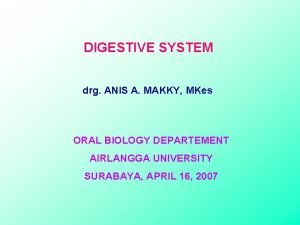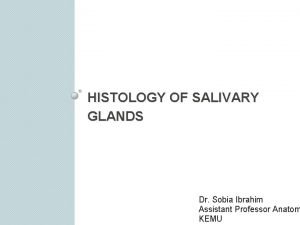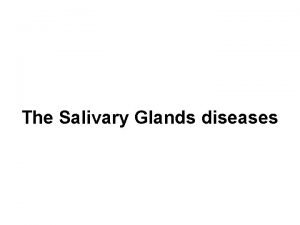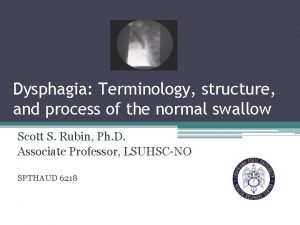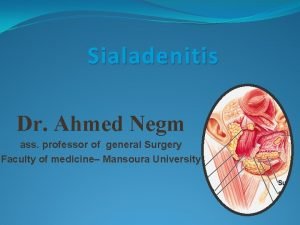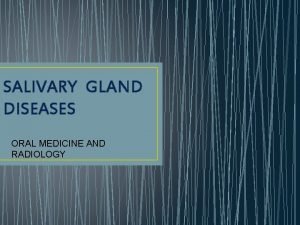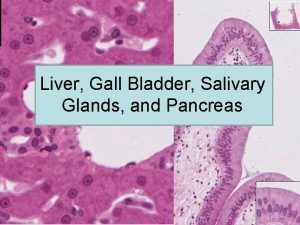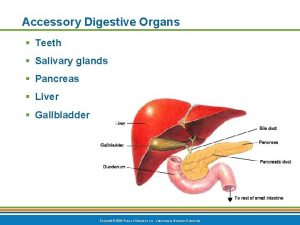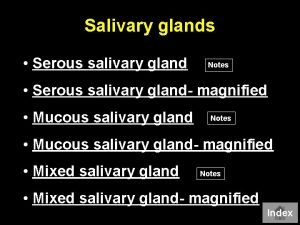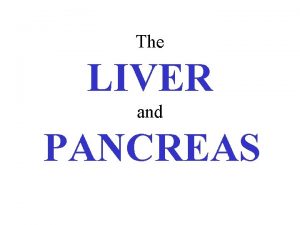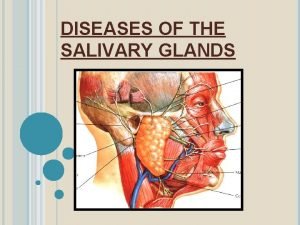Lecture Eight DIGESTIVE GLANDS Salivary glands Pancreas Liver








- Slides: 8

Lecture Eight DIGESTIVE GLANDS Salivary glands Pancreas Liver Pancreas Is a soft, lobular organ that lies in the posterior wall of the abdominal cavity. It is surrounded by thin layer capsule (reticular fibers) that sends septa into it, separating the pancreatic lobules. The acini are surrounded by a basal lamina that is supported by a delicate sheath of reticular fibers. It has a rich capillary net work. The pancreas is a mixed exocrine and endocrine gland that produce digestive enzymes and hormones. The enzymes are stored and released by cells of the exocrine portion. The hormones are synthesized in clusters of cells of the endocrine tissue known as islets of langerhans. The exocrine portion of the pancreas is a compound acinar glands. The acinus is composed of several serous cells surrounding a lumen. These cells are highly polarized with a spherical nucleus these cells contain secretory granules (have zymogenic granules) which stain pink. The human exocrine pancreas secretes the following digestive enzymes and proenzymes (trypsinogen, chymotrysinogen, elastase ribonuclease, carboxypeptidase, phospholipase, deoxyribonuclease and amylase).

Lecture Eight The endocrine pancreas called also (islets of langerhans) large pole area scattered among the dark acinar pancreas (oval rounded). They are three types of cells: α-cells (A-cells) constitute about (15 -20%) of the cells usually located peripherally, secrete glycogen which increase blood glucose level. β-cells (B-cells) constitute 80% found over the A-cells secret insoline which decrease blood glucose level. γ-cells (C-cells) Constitute (2 -3%) of the cells, they secrete somtatostatin hormone which inhibit the activity of α and β cells.

Lecture Eight

Lecture Eight Liver Is the largest gland in the body, weighing (1 -5 Kg), reddish in colour and occupy upper part of abdominal cavity under the diaphragm. The liver is covered by a thin connective tissue capsule called (Glisson's capsule) that becomes thicker at the hilum. This capsule send speta into the lobes dividing them into lobules. The liver lobule is formed of a polygonal mass of tissue, having the central vein as its axis. At the periphery of each lobule area of connective tissue called (portal area) contain: Branch of hepatic artery. Branch of portal vein Branch of bile duct. The basic structural component of the liver is hepatic plates or cords around the central vein. Hepatic plates composed of (hepatic cells) which is polyhedral shape and contain glycogen. The spaces between the hepatocyte called (sinusoid) this sinusoid lined two cells. Endothelial cells. Phagocyic cells of kupffer. Between the endothelial cells of the sinusoid and the liver cells found a space called (space if Disse) filled with plasma and its is facilities the delivery of the products of digestion to the liver cells and secretion of substances form liver cells to blood. The space also contains reticular fibers and connective tissue with few fibroblast that support the wall of sinusoid

Lecture Eight

Lecture Eight The functions of liver The storage of glycogen and glycogenolysis by phosphorylation to maintain the normal blood glucose concentration. The synthesis of the plasma proteins. Transport of lipids by transformation of the absorbed triglyceride into the portable lipoproteins. The interconversion of amino acids. The formation of bile slats and bile pigments. Vitamin storage and metabolism. The deamination of proteins and the production of urea from the end products of nitrogen metabolism. The inactivation of steroid hormones and the detoxification of drugs. Filtration of blood.

Lecture Eight Gall bladder The gallbladder is a hollow, pear-shaped organ attached to the lower surface of the liver. It can store 30 -50 ml of bile and communicates with the hepatic duct through the cystic duct. Structure of gall bladder The wall of the gall-bladder consists of a: Mucosa composed of simple columnar epithelium cell. The mucosa has abundant folds that are particularly evident in the empty bladder. All cells are capable of secreting small amounts of mucus. Submucosa: is absent. Muscularis extern: irregular arranged. Serosa or adventitia. Function of gall bladder Is to store bile and concentrating it by absorbing its water

Lecture Eight
